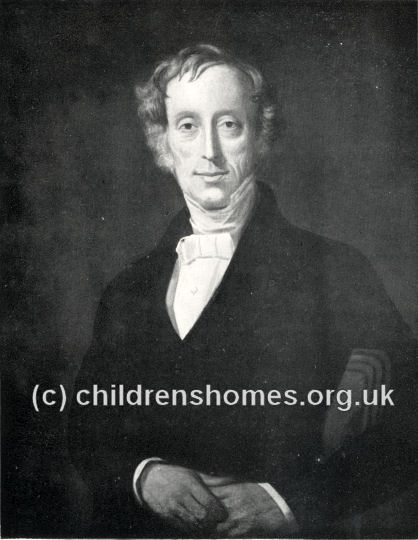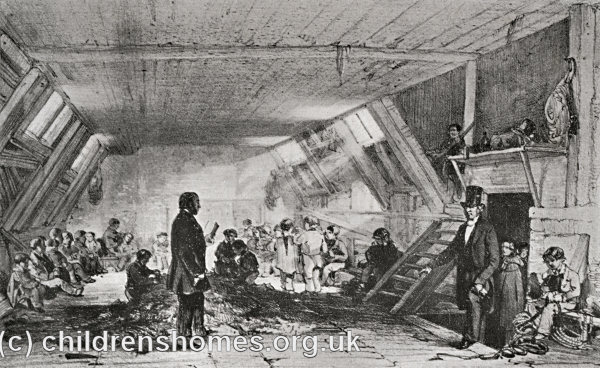Schools of Industry for Boys and Girls, Aberdeen, Aberdeenshire, Scotland
On October 1st 1841, a School of Industry for Boys, often said to be the first institution of its type in the British Isles, was opened by Sheriff William Watson in the old Greyfriars Parish School on Chronicle Lane, Aberdeen.

Sheriff William Watson. © Peter Higginbotham
The School was originally established as a branch of the existing House of Refuge on Guestrow, Aberdeen, supervised by the same staff, but with its own committee and funds — both institutions being financed by voluntary subscriptions. Each day, boys from the School of Industry marched to the House of Refuge for their meals. Those that were homeless also slept at the House of Refuge, while those with any kind of home returned there at night.

School of Industry, Chronicle Lane, Aberdeen, 1841.
A separate institution, known as the Soup Kitchen School, was founded in 1845 to deal with children involved in vagrancy and begging. Initially based in a room next to the public soup kitchen in Loch Street, the School moved the following year to Sugar House Lane to become the Juvenile Industrial School for Boys and Girls.
In 1845, the School of Industry moved to Quaker's Court, at 55 Guestrow, alongside the House of Refuge. In 1851, it was formally united with the Juvenile Industrial School to provide secular and religious instruction, together with industrial training, for children of both sexes.
In 1853, when the rent of the School of Industry was raised, the establishment relocated to part of the adjacent House of Refuge premises. On May 15th 1855, the School of Industry was formally certified under Dunlop's Act to operate as a Reformatory (later reassigned as an Industrial School), with Sugar House Lane housing boys and girls, and Guestrow boys only.
An official inspection in 1860 recorded that:
The two institutions moved out of Guestrow in 1862 to share more suitable accommodation at Skene Square, Aberdeen. In 1866, the Sugar House Lane building was closed after being condemned as insanitary. As a result, the House of Refuge leased its own premises at Ross's Court, Upperkirkgate. The School of Industry then occupied the whole of the Skene Square site, which was divided into sections for boys and girls.
In 1877, it was decided to move the boys out of Skene Square to new premises at Oakbank, about a mile to the west of Aberdeen. On November 26th, 1879, the Oakbank Industrial School for Boys was certified for operation and came into use before the end of the year. The Skene Square site continued in use until 1881, when the girls moved to new premises at Whitehall.
Records
Note: many repositories impose a closure period of up to 100 years for records identifying individuals. Before travelling a long distance, always check that the records you want to consult will be available.
- None identfied at present — any information welcome.
Census
Bibliography
- Higginbotham, Peter Children's Homes: A History of Institutional Care for Britain's Young (2017, Pen & Sword)
- Mahood, Linda Policing Gender, Class and Family: Britain, 1850-1940 (1995, Univeristy of Alberta Press)
- Prahms, Wendy Newcastle Ragged and Industrial School (2006, The History Press)
Links
- None noted at present.
Except where indicated, this page () © Peter Higginbotham. Contents may not be reproduced without permission.


